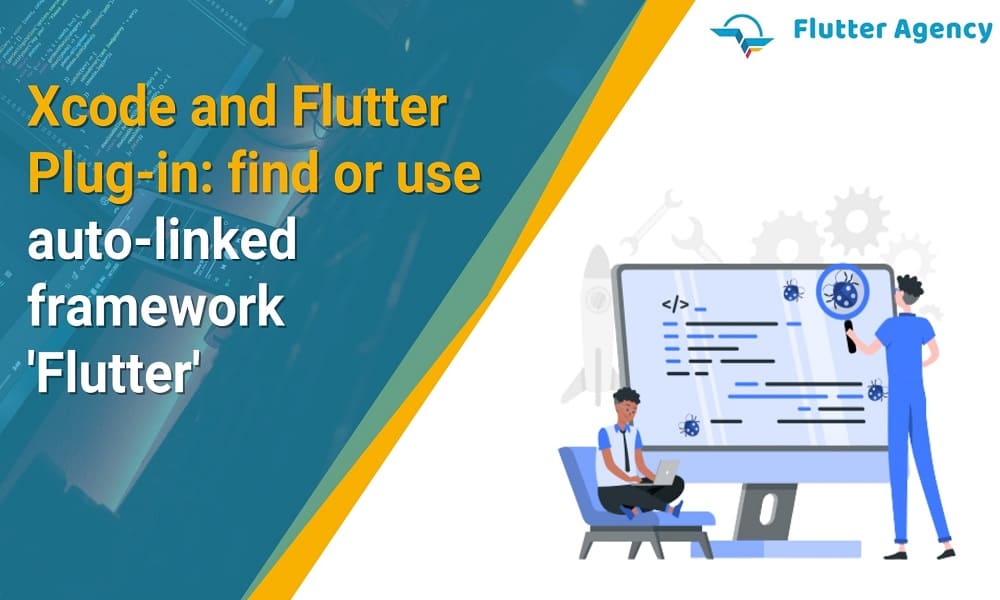Xcode and Flutter Plug-in: Could not find or use auto-linked framework ‘Flutter’
Flutter framework must link with Xcode and Flutter plugin to work with auto-linked functionalities. It will connect with embedded frameworks to examples with iOS directories. At the end of code samples, iOS apps have embedded options to auto-linked Flutter plugin. The Xcode must set out a new solution and bring a unique solution for a development environment. It explores more possibilities and works with other versions to control them quickly.
Why Xcode and Flutter plugin?
The existing application must create a Flutter module by focusing on running with Flutter changes with VS code options with the same Flutter commands. The development environment must optimize with Xcode and support the new version well. Creating a Flutter module must be flexible to show with Android use and embed with existing apps.
From the order line, run: the following command
Module association
The my_flutter module index structure is like a typical Flutter application:
my_flutter/.ios/Runner.xcworkspaceShudder/podhelper.RB lib/main. dart test/pubspec. yaml Add your Dart code to the lib/index. Add Flutter conditions to my_flutter/pubspec.yaml, including Flutter bundles and modules.
Why could it not find an auto-linked framework?
A Flutter module project is done at some/way/my flutter/. From that registry, you can run similar vacillate orders you would in some other Flutter project, similar to shudder run – – investigate or ripple fabricate ios. Likewise, you can run the module in Android Studio/IntelliJ or VS Code Extension with the Flutter and Dart modules.
Alternatively, add the critical NSLocalNetworkUsageDescription set to your ideal tweaked authorization exchange text. Since the Valid Architectures assemble setting is being taken out in Xcode 12, So Project record open in Xcode 12 will auto-produce a VALID_ARCHS full scale in User-Defines.
Follow this steps for the solution :
- Delete the iOS folder in your Flutter project
- Run flutter create.
- If you made any changes to your pod file, plists, etc. Update them now
- Install your pods and run.

What are Dart modules ?
This venture contains a solitary view model variant of your module before it’s inserted in your current application. It is valuable for steadily testing the Flutter-just pieces of your code.
The .ios/stowed away subfolder contains an Xcode work area where you can run an independent form of your module. It is a covering task to bootstrap your Flutter code and contains assistant contents to work with building structures or insert the module into your current custom mobile application.
How to implant the Flutter module in your current application?
There are two methods for inserting Flutter in your existing application. It will utilize the CocoaPods reliance supervisor and introduce Flutter SDK. Make structures for the Flutter motor, your accumulated Dart code, and all Flutter modules. Physically insert the systems, and update your current application’s construct settings in Xcode.
- Utilizing Flutter builds your application size
- Choice A – Embed with CocoaPods and the Flutter SDK
Also Read:
How to Run CocoaPods on Apple Silicon (M1)?
This technique requires each engineer chipping away at your venture to have a privately introduced adaptation of the Flutter SDK. Then, assemble your application in Xcode to run the content to implant your Dart and module code. This permits a quick cycle with the most modern form of your Flutter module without running extra orders outside of Xcode.
How to alternate registry structure ?
The accompanying model expects that your current application and the Flutter module are in kin registries. Assuming you have an alternate registry structure, you might have to change the relative ways. If your current application doesn’t have a Pod file, follow the CocoaPods getting everything rolling manual for adding a Podfile to your task.
- Add the accompanying lines to your Podfile
content_copy flutter_application_path = '../my flutter' Load File.join(flutter_application_path, '.ios', 'Shudder', 'podhelper.rb')
2. For each Podfile focus on that requirements to insert Flutter, call install_all_flutter_pods (flutter_application_path)
content_copy Target 'MyApp' do install_all_flutter_pods (flutter_application_path) End
3. Run case introduce
The podhelper.RB script installs your modules, Flutter. Framework, and App. Framework into your venture. Your application’s Debug and Release construct setups insert the Debug or Release fabricate methods of Flutter individually. Finally, add a Profile fabricate design to your application to test in profile mode.
How to implant systems in Xcode?
On the other hand, Flutter developer can produce the essential systems and install them in to the application by physically altering the current Xcode project. You might do this off chance that colleagues locally introduce Flutter SDK and CocoaPods.
On the other hand, you would instead not use CocoaPods as a reliance director in your current applications. It would help if you ran a ripple assembler ios-system each time you made code changes in your Flutter module.
What is insert and connection ?
You can skirt these directions if you’re utilizing the past Embed with CocoaPods and Flutter devices strategy. The accompanying model accepts that you need to create the systems to some/way/MyApp/Flutter/. Then, insert and connect the produced structures into your current application in Xcode. There are numerous ways to utilize the best technology for your undertaking.
What is the interface on the systems?
For instance, you can drag the systems from some/way/MyApp/Flutter/Release/in Finder into your objective’s Build Settings > Build Phases > Link Binary with Libraries. Add $(PROJECT_DIR)/Flutter/Release/to the Framework Search Paths (FRAMEWORK_SEARCH_PATHS) in the objective’s form settings.
Insert application and module systems in Xcode and Flutter structure with CocoaPods. The App. C framework and module designs are created as portrayed in Option B.
Then again, rather than circulating the enormous Flutter. xcframework to different designers, machines, or ceaseless mix frameworks, you can instead create Flutter as CocoaPods pod spec by adding the banner – – CocoaPods.
This makes a Flutter. podspec rather than a motor Flutter. xcframework. Implant and connect the created App. xcframework, FlutterPluginRegistrant.xcframework, and any module structures into your current application as depicted in Option B.
What is neighborhood Network Privacy Permissions?
One method is to keep a different duplicate of your application’s Info. plist per construct arrangement. The accompanying guidelines accept the default Debug and Release. Change the names depending on the situation relying upon your application’s assemble setups.
Rename your application’s Info. plist to Info-Debug. plist. Duplicate it called Info-Release. plist and add it to your Xcode project. In Info-Debug.plist, add the vital NSBonjourServices and set the value to a cluster with the string _dartobservatory. TCP.
Conclusion
Till now, we’ve seen some valuable information about xcode and flutter plugin. We talked about the steps for the solution of finding auto-linked framework. Then, we planted flutter module to current flutter application. Here , we learned the process to alternate the registry structure. That’s how we learned to implant the system in the code.
Looking for techies, who can work for you and solve all your technical queries and help you in developing the perfect mobile app for you? Contact us as we are leading flutter app development company in USA with high-skilled team of mobile app developers.
Frequently Asked Questions (FAQs)
1. Which coding is being used in Flutter?
Flutter code is compiled into the ARM or Intel machine code and in JavaScript for quick and smooth performance on any device.
2. What is the significant difference between the plugin and the package of Flutter?
In the plugin, we will get only the tool’s functionality, whereas, in the package, it allows us to design and develop something customized new.
3. Can the Flutter app be run without an Xcode?
Without Xcode, you can not create the Flutter app, which runs on the iOS simulator or the device as the Xcode is constructed for an iOS platform. You will be able to run it on the android emulator, which you will configure and launch from within the Android studio, and will work regardless of if Xcode is installed.
Contemporary ventures
Recent blog
ready to get started?
Fill out the form below and we will be in touch soon!
"*" indicates required fields













